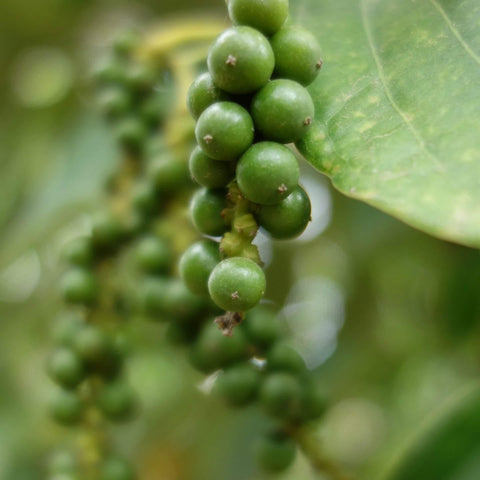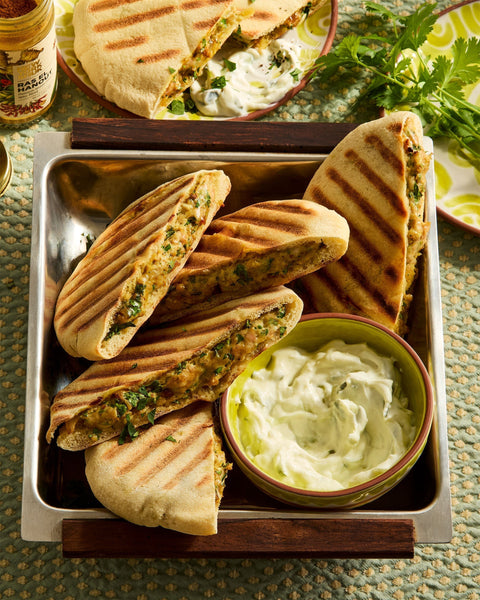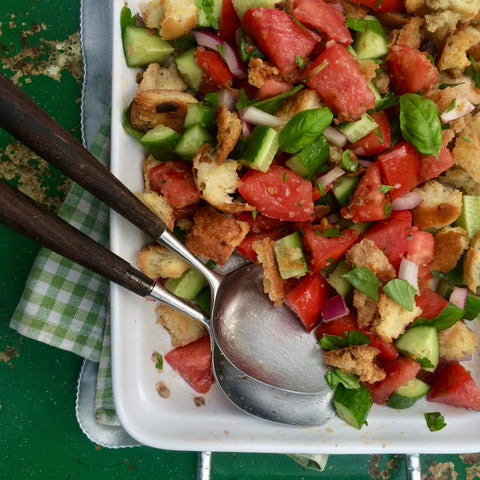It started with salt. Years ago, we realized how much of a difference it made to use the same high-quality salt consistently. Diamond Crystal Kosher for cooking. Maldon for finishing. Fine sea salt for baking. That change brought both consistency and clarity to everyday cooking—and made it so much easier to make delicious, properly seasoned food.
After that came pepper. We’d discovered Tellicherry peppercorns and loved them for their bold, warm flavour. But we quickly discovered that the name “Tellicherry” refers only to a size grade—not to a specific origin or standard. True Tellicherry should come from the Malabar coast of India, but that’s often not the case. Without careful sourcing and proper selection, quality can vary significantly. (That said, the Tellicherry peppercorns we carry from Épices de Cru are the real thing—sourced with care, sorted to a high standard, and consistently excellent. It’s still a staple in our kitchen.)
Kampot pepper, however, offers a different standard altogether. It's grown in southern Cambodia, under strict PGI (Protected Geographical Indication) status. Every part of its cultivation, drying, and selection is regulated, which means a level of consistency and quality that’s rare in the spice world. Its flavour is remarkably consistent, complex, and distinctive—and we knew immediately that it was something we wanted to use in our own kitchens and offer to our customers.
We’d been searching for the right wholesaler for Flavourfull, and finally achieved a first—buying directly from the source. When we were sent an email saying they needed a few more days of hot sunny weather to dry the crop properly before shipping it out, we knew we knew we were about to receive the freshest pepper we’d ever stocked.
When the shipment arrived, the aroma was incredible—immediate and intense. We brought in just a few kilos of each type: black, white, and red. A small test run, freshly harvested, to share and see what speaks to you.
All three come from the same plant—the difference lies in when the berries are harvested and how they’re processed. Black is picked just before full ripeness, then sun-dried; red is fully ripened on the vine; and white is made by soaking ripe berries to remove the outer skin, leaving a milder, paler core.
If you’re wondering how to actually taste them, the answer is to keep it simple. These peppercorns aren’t just about heat—they’re about character.
The black is bold and aromatic, with notes of mint and eucalyptus. It’s beautiful cracked over soft-scrambled eggs, ground onto grilled mushrooms or steak, or stirred into a vinaigrette with lemon and olive oil.
The white is bright and clean, with subtle floral and citrus notes. It shines in silky vegetable purées, over poached chicken with lime, or whisked into creamy sauces and dressings.
The red is the most surprising—rich, gently sweet, and slightly fruity. It’s lovely on ripe tomatoes with flaky salt, roasted beets or carrots, or folded into a simple pasta with olive oil and pecorino.
We’ve bundled all three together in a trio pack, with a bit of savings built in. It’s a beautiful way to explore how much flavour a single ingredient can carry.
And if you do try them, we’d truly love to know what you think. Reviews mean a great deal to small businesses like ours—and your feedback helps guide what we bring in next.




Comments (0)
There are no comments for this article. Be the first one to leave a message!